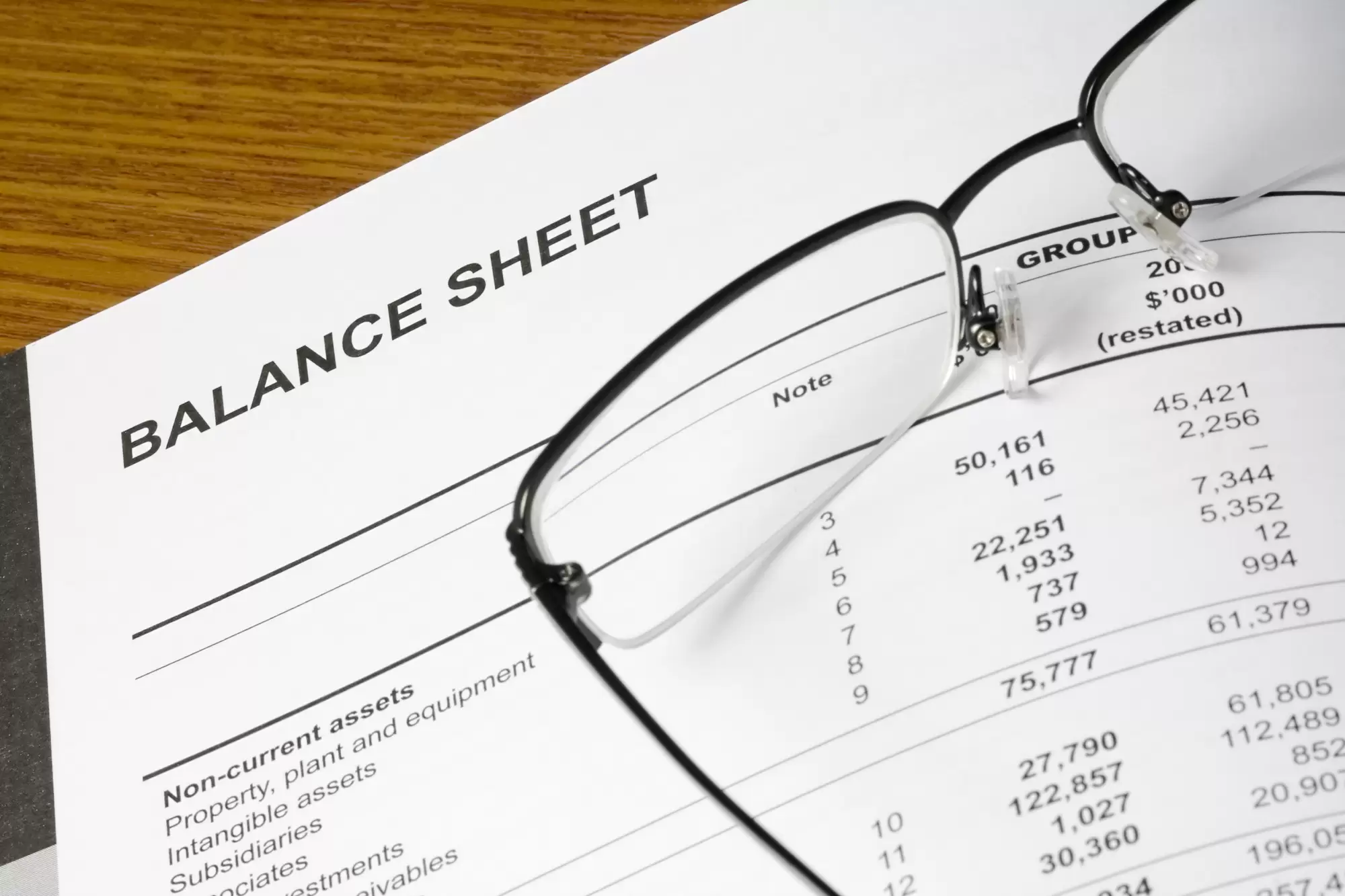

Balance sheet of a financial report with spectacles
It’s never been faster or easier to start a business than it is today. Unfortunately, signing up to run a business doesn’t guarantee someone knows how to run a business successfully. Scarily, only 40% of adults were able to pass a test for financial literacy.
This means that nearly 2 out of 3 potential business owners run the risk of not knowing the basics they need to thrive in business.
Today, we’re going to fix that. Let’s take your business education to the next level and learn how to read financial statements.
Knowing how to read financial statements requires understanding some basic accounting concepts. To understand how to read corporate financials, the first step is knowing how to understand a balance sheet.
Balance sheets are a record of how much your business is worth. It’s a record of all the assets your business owns. Balance sheets also keep track of any financing for your assets by a particular date.
Business balance sheets track assets, liabilities, and the owner’s equity. Or, to put it more plainly, they keep track of what you own, your cash flow, who you owe money to, and how much money you’ve got left.
Liabilities aren’t necessarily just what you owe to creditors, either. Your business payroll is an example of a different kind of business liability you need to keep track of.
Balance sheets are the most basic financial statements available. They won’t give you much insight into how your business is functioning by themselves. That’s what you need income statements for.
Income statements are also sometimes called Profit and Loss Statements. They’re a much more detailed record of your business’s finances.
Income Statements are often issued as part of quarterly statements. First, they chart a business’s revenues and expenses.
This is fairly similar to a balance sheet, just for a three-month interval. This is just the beginning, though.
The next column on an income statement is the Cost of Goods Sold. This is the cost of each individual unit. For manufacturers, this is the cost of how much it costs to produce each piece.
Calculating the Cost of Goods Sold lets you figure out your total profit. You just need to subtract the Cost Of Goods Sold from the Total Revenue. This will give you the total profit, per unit.
Then you’ll be able to calculate your quarterly operating expenses. These financial insights let you calculate Income Before Taxes and Net Income. Then you’ll be able to calculate the amount of business deprecation, as well.
All of this financial data will give you a much more clear and robust portrait of your business and how it’s functioning. These insights can be given to your employees, your business partners, and shareholders. It empowers everyone in your organization and orbit, giving you all the tools you need to thrive in business!
If you’re ready to take your financial literacy to the next level, you can learn more here.
Learning how to read financial statements is just the beginning. There are tons of outstanding business tools and resources out there to help you take your business to the next level.
Now that you’ve begun your journey towards financial literacy, browse the rest of our business articles for even more business advice.
Hey there! Ready to embark on a historical journey with Air India? Whether you're a…
In 2017, altcoins were seen as experimental side projects to Bitcoin. By 2021, they became…
Shopping centers in Las Vegas have a unique opportunity to stand out by offering not…
Levitra, a widely recognized medication for treating erectile dysfunction (ED), has proven to be a…
Have you ever looked down at your carpet and wondered if there’s a budget-friendly way…
Counter-Strike 2 (CS2) has elevated the thrill of case openings, captivating both seasoned CS:GO veterans…